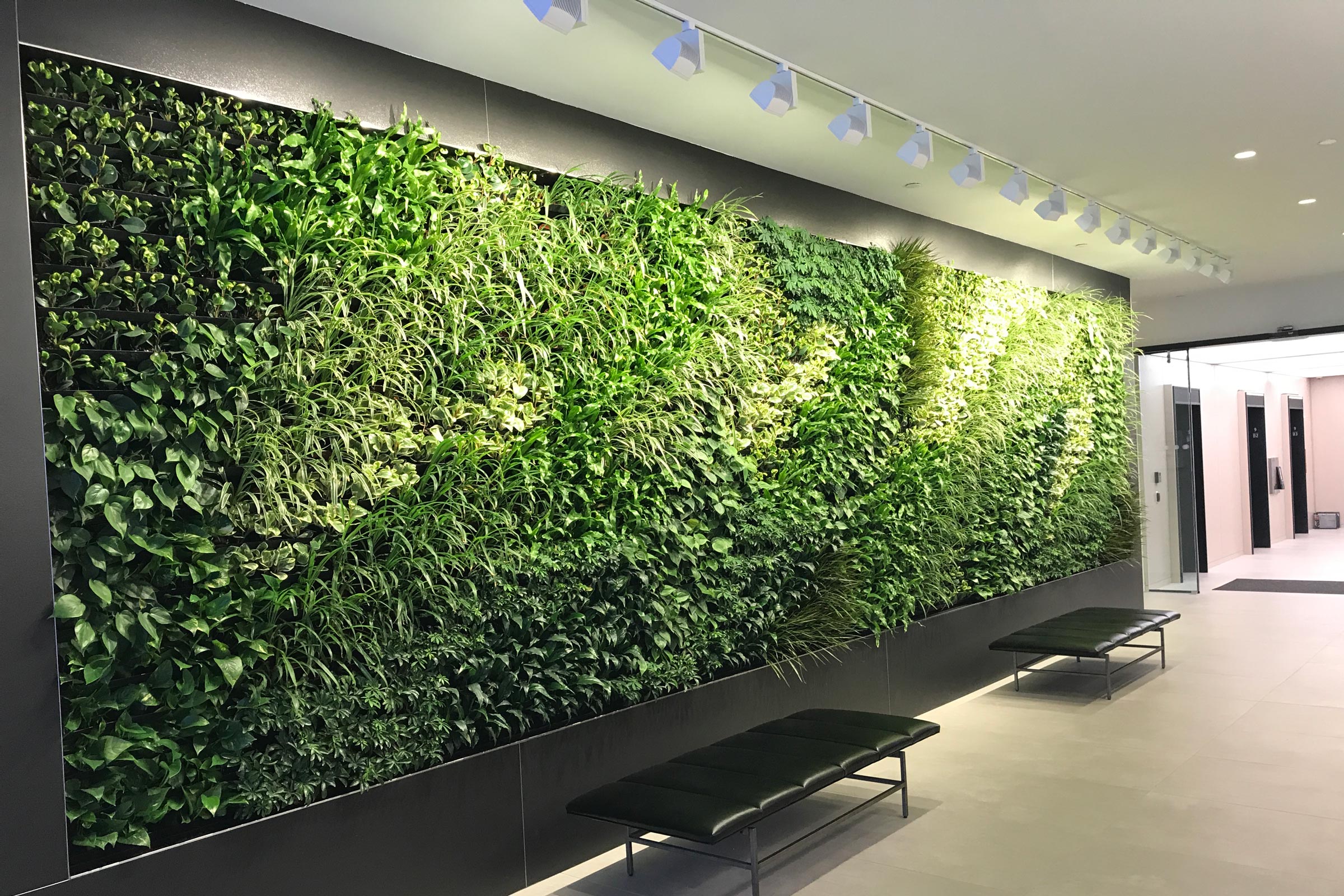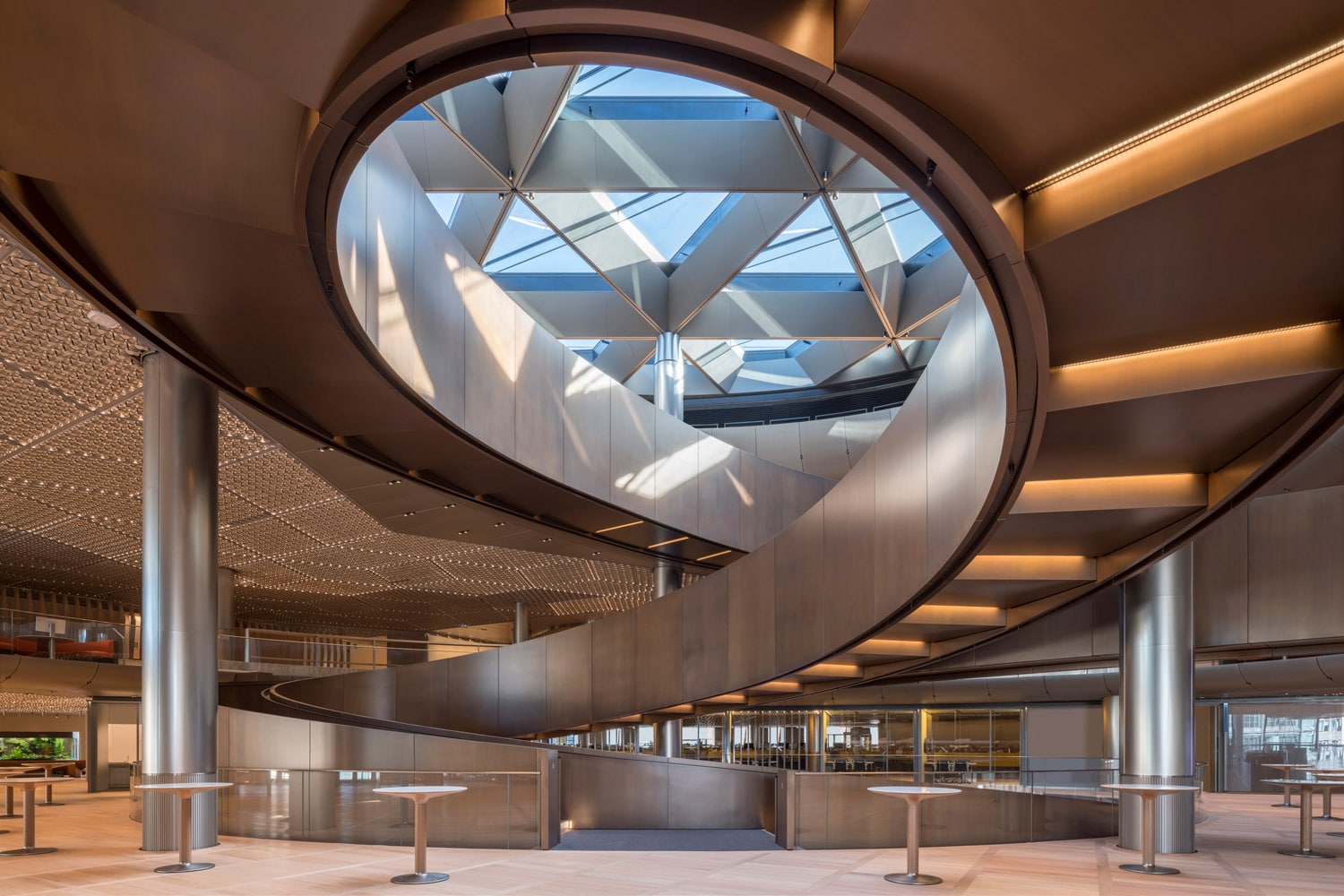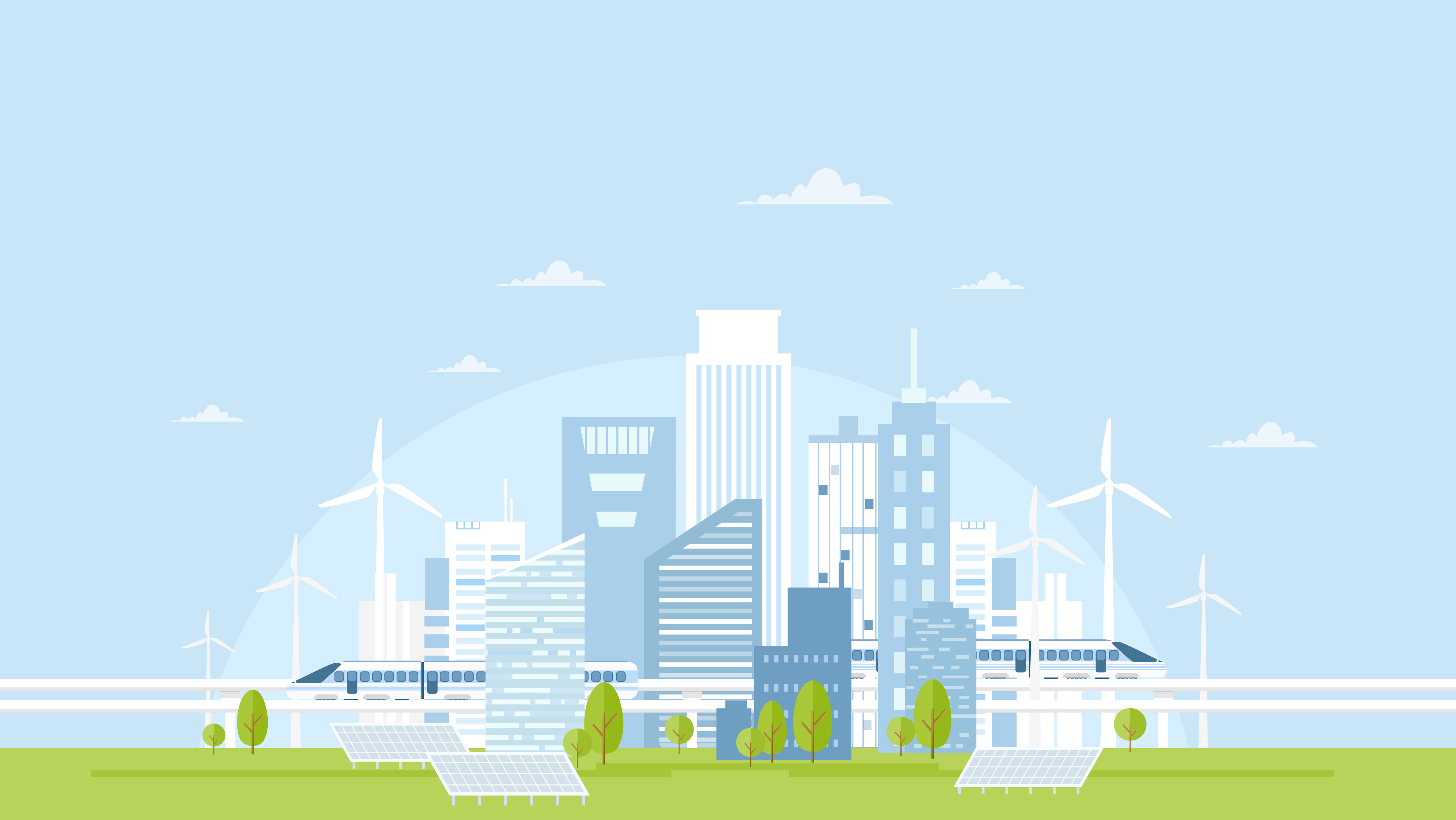Story at a glance:
- Born out of the 1970s energy crisis, the sustainable architecture movement seeks to reduce the environmental impact of built structures throughout their entire lifespans.
- The benefits of sustainable architecture include low operating costs, improved air quality, higher property values, and improved occupant productivity.
- Sustainable architecture is characterized by eight key elements: passive solar design, living walls and green roofs, water efficiency, energy efficiency, the use of sustainable building materials, improved indoor environmental quality, waste reduction, and optimized land use.
At its core, sustainable architecture is a movement that strives to design long-lasting buildings that have a minimal impact on the environment—both at the point of construction and throughout the structure’s life cycle—in order to combat climate change and ensure a healthy future for our descendants.
As we begin to understand more and more how the built environment impacts our natural world, sustainable architecture grows in popularity. Added benefits like improved indoor environmental quality, lower operating costs, and higher property values further incentivize the adoption of sustainable design techniques.
What is Sustainable Architecture?
In the practical sense, sustainable architecture is an ecologically conscious approach toward building design that focuses on limiting a structure’s long-term environmental impact on the natural world; in short, sustainable architecture is focused on designing a better tomorrow, for both ourselves and our descendants.
How Does Sustainable Architecture Differ From Green Architecture?
While the two are often used interchangeably, “sustainable architecture” and “green architecture” differ slightly in that the former considers a building’s long-term social, economic, and environmental impacts, whereas the latter focuses more on energy efficiency and minimizing ecosystem disruption.
- Sustainable architecture is often conceptualized as a holistic approach to architecture in that it focuses on designing environmentally friendly buildings that work within an established social and economic framework without depleting resources for future generations.
- Green architecture, on the other hand, is generally concerned with designing buildings with the smallest environmental footprint possible and often incorporate some form of renewable energy or green space, such as a rooftop garden or living walls.
Ultimately, however, it’s good to keep in mind that different people have different definitions for what qualifies as “sustainable architecture” versus “green architecture,” and some people make no distinction at all.
Why is Sustainable Architecture Important?
According to the United Nations Environment Program, buildings are responsible for roughly 39% of the world’s annual carbon emissions and account for approximately 36% of all global energy usage.
Sustainable architecture can help reduce those percentages by using renewable energy and energy-efficient design features, making it an integral component of climate-change mitigation efforts.
What’s more, sustainable architecture places a high value on conserving water and non-renewable resources, which in turn helps to ensure a healthier future for our descendants without compromising our own needs in the process.
Benefits of Sustainable Architecture

Alternative raw materials. Biomass, CO2, used materials, and waste can replace fossil resources. Image courtesy of Covestro
As one might expect, the main benefit of sustainable architecture is its reduced impact on the natural world. Designing sustainably helps keep our air, water, and soil cleaner while also conserving our planet’s renewable and non-renewable resources for future generations.
Of course, sustainable architecture isn’t just desirable for its reduced environmental impact—other benefits include:
- Lower operating costs. On average sustainable buildings have operating costs that are approximately 25% lower than traditional buildings without energy-efficient features.
- Higher property values. On the flip side sustainably designed buildings tend to have higher property values compared to their non-sustainable counterparts; a study conducted by Freddie Mac in 2019 found that energy-efficient homes sold for 2.7% more than comparable homes without sustainability upgrades.
- Improved indoor air quality. By limiting the use of plastics and other potentially toxic building materials in favor of green building products, sustainable structures lower the amount of volatile organic compounds (VOCs) released into the air, thereby reducing the risk of developing certain respiratory illnesses and cancers.
- Increased occupant health and productivity. Thanks to a combination of improved indoor air quality, natural sunlight, the inclusion of vegetation, and efficient climate control systems, sustainable buildings can also help improve occupant health and increase productivity.
The History of Sustainable Architecture
While there is some debate as to when sustainable architecture truly originated—in modernity, that is—there’s no denying that the 1970s energy crisis had a hand in pushing it from a novelty to a practical necessity. Oil shortages stemming from the Iraq War pushed world leaders to reconsider their countries’ dependency on non-renewable energy sources, leading to the goal of integrating clean energy into infrastructure and other building projects.
In the late 1980s sustainable architecture would be catapulted forward by the efforts of Bob Berkebile, an architect who petitioned the American Institute of Architects (AIA) in 1989 to adopt more environmentally conscious measures. This would ultimately result in the creation of the Committee on the Environment (COTE), which helped lay the framework for new guidelines in sustainable architecture.
The year 1990 then saw the introduction of BREEAM, the United Kingdom’s—and the world’s—first sustainable building rating system, followed later by LEED in the United States.
In the early 2000s the demand for sustainable architecture would increase yet again as early concerns surrounding carbon emissions and global warming mounted. This led to a renewed push towards transitioning our buildings over to being powered by clean energy.
Today sustainable architecture is more popular than ever and is regarded as a crucial step in mitigating the effects of anthropogenic climate change.
Key Elements of Sustainable Architecture
But how does one actually go about designing a sustainable building? What strategies and principles are being implemented by architects to ensure that these buildings are as efficient and environmentally friendly as possible? To answer this question, let’s take a look at some of sustainable architecture’s key elements.
Passive Solar Design
When it comes to sustainable architecture, few things are more important than passive solar design, or the process by which a building’s walls, windows, roof, and floors are designed to make efficient use of solar energy without the use of electrical or mechanical devices. In its most basic form passive solar design may be achieved through the installation of cleverly-placed louvers or solar shades to reflect the summer sun while still allowing the winter sun to shine in and provide solar heat. At its most intricate, passive solar design informs a building’s orientation, window placement, landscaping, and material composition.
In northern latitudes, for example, passive solar design involves a high percentage of south-facing windows and a moderate amount of thermal mass walls and floors, which help absorb and redistribute heat evenly throughout a building.
Green Roofs and Living Walls

Biophilic design helps create a relaxing and rejuvenating home. Some options include adding a living wall, a green roof, or incorporating daylight design strategies. Photo courtesy of Lendlease Properties
The concept of a “living wall” is actually quite ingenious: Instead of having climbing plants wind up the side of a building from the ground, vertical planters are attached to a building’s exterior and seeded with local flora. Living walls are one potential aspect of biophilic design—that is, design that emphasizes connection to the natural world—can also be used indoors to help improve air quality and manage acoustics.
In similar fashion, green roofs are roofs that are wholly or partially covered with vegetation and are typically comprised of a waterproofing membrane, growing medium, and local plant species. Both green roofs and living walls serve as a means of reducing stormwater runoff, improving urban air quality, and limiting energy consumption by helping to maintain comfortable indoor temperatures, which can in turn reduce a building’s cooling load by an average of 50%.
Water Efficiency
As one of the most at-risk resources, freshwater should be conserved, filtered, and reused wherever possible. Sustainable buildings accomplish this through the installation of water-efficient taps, appliances, and fittings, as well as by collecting rainwater for use in toilets and garden watering.
Ideal sustainable buildings will have onsite gray water—and potentially even blackwater—recycling systems to reduce the amount of wastewater produced. Along with living walls and roofs, storm-water ponds can also help conserve water by reducing or making efficient use of storm-water runoff.
Energy Efficiency
Similarly, sustainably designed buildings are meant to be as energy-efficient as possible—a feat typically achieved through passive solar design and the production of onsite renewable energy. Passive solar design helps regulate indoor temperatures without the need for excessive heating and cooling, resulting in lower energy loads, whereas renewable energy production can help provide a portion or all of the power needed to run the building.
Energy-efficient appliances, proper insulation, and appropriately-sealed windows further serve to reduce a building’s energy needs, resulting in lower operating costs.
Sustainable Building Materials

Raw and unfinished authentic reclaimed barn wood planks. Photo courtesy of Woodstock Architectural Products
Sustainable architecture also puts a strong emphasis on utilizing high-quality, environmentally friendly materials (such as bamboo, stone, rammed earth, glass, mud bricks, cork, etc.) as opposed to more traditional non-renewable building supplies.
In an effort to reduce waste production, recycled and salvaged materials—especially wood and timber from previously dismantled buildings—are incorporated into sustainable architecture projects whenever feasible. Architect Robin Guenther, for example, made use of reclaimed wood from a 1920s airplane hangar in her design of the Lucile Packard Children’s Hospital in Stanford, California.
Indoor Environmental Quality Enhancement
Sustainable architecture also seeks to enhance the indoor environmental quality of buildings, which in turn helps to improve occupant health and productivity. This is achieved in part through the use of natural building materials with lower levels of volatile organic compounds (VOCs) than standard building products, which can help reduce the risk of developing certain cancers. Indoor air quality is further improved by ensuring that the building is designed to facilitate proper airflow, which decreases the amount of ambient moisture and prevents the growth of mold or mildew—both of which can lead to respiratory illnesses.
Adequate natural sunlight, living walls that dampen sound, and comfortable temperatures can also help to improve the occupants’ mental health and bolster productivity.
Waste Reduction
Another key element of sustainable architecture is waste reduction, both during the initial construction process and throughout the building’s life cycle. Traditional building practices account for an estimated 33% of the world’s overall waste—and much of the materials wasted in construction and demolition may be recycled for further use. Incorporating reclaimed or salvaged materials is one way that sustainable architecture helps reduce waste at a project’s outset.
Sustainable architecture also seeks to reduce waste through a building’s lifespan by recycling grey- and black-water on-site, limiting energy waste, and implementing effective waste-management systems.
Land Use and Site Impact Reduction
Lastly, sustainable architecture seeks to make the most efficient use of land while also reducing a built structure’s impact on the site itself. In general, this means designing with—rather than against—the existing topography and limiting the removal of existing features, while also maximizing the usage of the land itself. In less densely populated environments, this may be exemplified by incorporating existing terrain into the building’s structure and building upwards instead of outwards to allow larger areas for green spaces to thrive.
In an urban environment, this might look like the conservation of biodiverse flora, the integration of gardens and other forms of urban agriculture, and the installation of permeable sidewalks/roads to mitigate flooding.
Leading Examples of Sustainable Architecture

Bloomberg’s European headquarters is one of the most sustainable office spaces in the world. Photo courtesy of Nigel Young / Foster+Partners
Curious as to what sustainable architecture actually looks like? Let’s take a look at a few popular examples from around the globe.
Bloomberg European HQ
In London Bloomberg’s European headquarters is one of the most sustainable office spaces in the world and holds a 98.5% BREEAM rating, which is one of the highest ever awarded. Completed in 2017, the office building implements a breathable-wall system to facilitate proper ventilation, reducing the need for electrical air conditioning. A central atrium lets in natural sunlight and the building’s centerpiece—a winding, looped ramp—directs warm air up to the ceiling before escaping onto the roof. Energy is also saved by way of the headquarters’ LED light system, which allows Bloomberg to use 40% energy than comparable office spaces.
Bahrain World Trade Center
Completed in 2008, the Bahrain World Trade Center is an incredible display of sustainable architecture in action—characterized by two 787 foot-tall towers connected by three sky bridges, the BWTC was the first skyscraper in the world to incorporate the use of wind-turbines as an integral component of its design. Positioned so as to receive wind blowing in from the Persian Gulf, the BWTC’s two towers funnel air through the structure’s center to power three turbines, of which produce up to 15% of the towers’ energy.
Further sustainability features include kinetic insulation, energy-efficient lighting and appliances, and solar shades to reduce the need for air conditioning.
The Edge
Often referred to as both the smartest and greenest building in the world, The Edge—an office building in Amsterdam—is a pioneer in both data collection and sustainable architecture. Using a grid of super-efficient LED sensor panels, The Edge is capable of tracking everything from light and motion to humidity and temperature, which then allows the building’s systems to adjust accordingly to save energy. All in all, The Edge uses approximately 70% less energy than comparable office spaces—but thanks to an extensive grid of solar panels, it produces more energy than it needs.
If that wasn’t impressive enough, The Edge also uses a rainwater catchment system to flush toilets and water the building’s gardens and north-facing ecological corridor.
Eastgate Centre
Completed in 1996, the Eastgate Centre in Harare, Zimbabwe is one of the first large-scale buildings to model its self-cooling system off of termite mounds. In order to keep interior temperatures cool, the Eastgate Centre features materials with high thermal capacities, a centralized atrium to let in light, and a ventilation system that allows hot air to escape from brick chimneys; a system of timed fans then helps draw cool air in through smaller vents in the building’s center core. Overall, this allows Eastgate Centre to use less than 10% of the energy used by comparably-sized buildings.
Manitoba Hydro Place
As the only office tower in Canada to receive a LEED Platinum rating, Manitoba Hydro Place is one of the most – if not the most – energy-efficient office towers in all of North America. Serving as the headquarters of Manitoba Hydro, the Manitoba Hydro Place makes use of an array of impressive sustainable design features, including a geothermal HVAC system, 377 ft tall solar chimney, and adjustable exterior wall plates to improve ventilation. All in all, Manitoba Hydro Place is 70% more efficient than comparable office towers.
The Future of Sustainable Architecture
When it comes to the future of sustainable architecture, the possibilities are almost endless. As technology advances and new techniques are shared on a global scale, the field of sustainable architecture will only continue to grow. Even now, new sustainable building materials are being experimented with, including:
- Mushrooms. Using the mycelium found in mushrooms, companies like Evocative have created non-toxic, environmentally friendly insulations that grow and expand once injected behind a wall.
- Bendable concrete. Thanks to the inclusion of short polymeric fibers, bendable concrete is able to flex and withstand heavy loads without cracking—what makes it sustainable, however, is that it is injected with carbon dioxide and can be produced using waste composites without compromising its structural integrity.
- Shirasu Kabe. Produced by Habitus, Shirasu Kabe is a plaster wall finish created using volcanic soil sourced from Japan. Due to its unique organic properties, the plaster actually helps control humidity and even purifies the air.
As sustainable architecture becomes more commonplace and the effects of anthropogenic climate change become more apparent, we’re likely to see a shift in large-scale green infrastructure development that enforces sustainable design a key feature. In the US efforts are already being made to upgrade energy-efficiency measures and transition certain urban centers over to renewable energy sources.
All in all, the future of sustainable architecture looks bright.
5 Tips on How to Incorporate Sustainable Architecture in Your Projects
Of course, the tenets of sustainable architecture can be implemented beyond urban planning or infrastructure projects; they can also be incorporated at the micro level in your own projects. If you’re planning on building a new home, renovating an old home, or even just constructing a garage or workshop, follow the tips below to ensure your project is as sustainable as possible.
1. Consult with professionals.
When it comes to designing a sustainable, energy-efficient home—or improving upon an existing one—the best course of action is consult with professionals who are experienced in planning and constructing energy-efficient buildings. This will help ensure that your budget estimates are realistic and will give you a wide variety of design options to consider.
2. Conduct a thorough site analysis.
Your project’s physical location—that is, the space it occupies, the site topography, and local climate—will inform your decisions when it comes to layout and orientation, which in turn influences the feasibility and technical aspects of passive solar design and helps determine which renewable energies may be implemented onsite.
3. Choose the right materials.
In order for your project to be truly sustainable, it needs to be both energy-efficient and have a long lifespan—two things that are heavily dependent on using the right materials. If you live in a cold, northern climate, for example, you might consider using something like low-emission concrete in your project, as it is durable, low-maintenance, and has a high thermal mass that allows it to store and redistribute solar heat.
If you’re having trouble figuring out which materials are best for your project, refer back to the first tip—sustainability professionals will be able to give you a better idea of what materials to use.
4. Reuse materials whenever possible.
This is sort of an extension of the previous point, but it’s a useful tip all the same: Recycle and reclaim materials whenever possible. Reusing existing materials helps keep waste out of landfills, reduces the project’s overall energy expenditure, and can drastically reduce the project’s final cost. Some construction companies—such as the Canada-based JD Composites—specialize in using recycled and reclaimed materials, so it’s worth checking whether there are any in your area.
5. Choose renewable energy.
Finally, incorporate renewable energy into your project’s wherever possible—be that in the construction company you choose or the means by which your project is powered. As it stands solar energy is the most popular and widely available source of renewable energy, one that can be implemented even in unlikely places if you get clever about it.
Geothermal power and wind turbines are also often used in sustainable architecture projects, and both—along with solar energy—are incentivized by many world governments. In the US, for example, government-funded renewable energy programs exist at both the state and federal levels.
Conclusion
At the end of the day sustainable architecture is a must-have going forward if we hope to address and mitigate the effects of anthropogenic climate change. By rethinking the way in which we plan, construct, and use the built-environment, we can work to reduce the waste and energy involved in building and occupying the structures we inhabit. In doing so, we help ensure that future generations have access to clean water, clean air, clean soil, and clean energy.
As sustainable architecture continues to develop and new materials or new techniques emerge, it’s in all of our best interests to approach these innovations with an open mind. If you or your company are planning a building project in the near future, seriously consider implementing what sustainable building strategies you can—it’ll likely save you money in the long run and will reduce your project’s short- and long-term carbon emissions.




